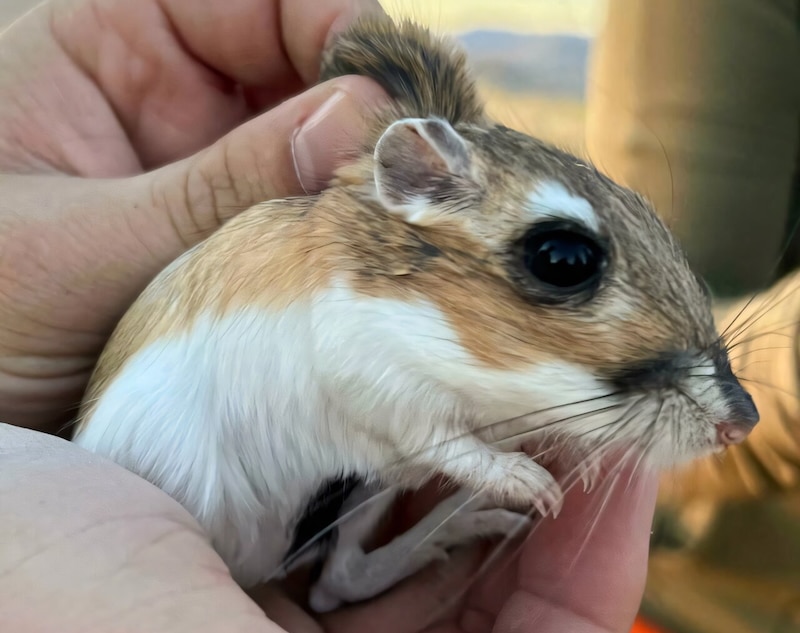This post was originally published on Eco Watch
With the climate crisis leading to more frequent and severe droughts, many wildlife species in the lower 48 United States will suffer from year-long droughts almost five times as frequently in the coming decades as they did historically, according to a new study.
Droughts lasting three years could become nearly seven times as frequent, a press release from the U.S. Department of Agriculture Forest Service said.
Lack of moisture affects how animals compete with each other for resources, contributes to habitat loss and leads to heat stress and dehydration.
“The degree of increased drought exposure for each species in our analysis strongly depends on future greenhouse gas concentrations,” said lead author of the study Dr. Merijn van den Bosch, a postdoctoral researcher at Colorado State University, in the press release. “But even under a lower-concentration scenario, virtually all vertebrates face increased year-long and multi-year droughts in the second half of this century. The implications will depend on the species and the length of the drought.”
The research team found that, from 2050 to 2080, year-long droughts would be nearly five times as frequent as they had been from 1950 to 2005.

Observed change (%) in annual (12-month) and prolonged (36-month) droughts between 1952–1983 and 1991–2021, across Level 3 Ecoregions in the contiguous U.S. Communications Earth & Environment (2024). DOI: 10.1038/s43247-024-01880-z
“Drought, abnormal soil moisture deficits due to low precipitation and excess evapotranspiration, is a major environmental stressor with multifaceted effects on wildlife communities and habitat, including the modification of microbial soil composition, forest die-offs, the proliferation of invasive species, and the destabilization of species interactions through changes in competition and trophic dynamics. Extreme drought, defined as the 1% most severe drought conditions that occurred between 1950 and 2000, is expected to annually affect 30% more land area by the end of the 21st century,” the authors of the study wrote.
One example of an animal having to adapt to a changing climatic landscape is the giant kangaroo rat, an endangered species native to California’s dry habitats. Though giant kangaroo rats have adapted to the occasional short drought, populations can plummet following multi-year droughts. This compounds existing threats, including the loss of almost all their historic habitat.
A giant kangaroo rat, rescued and safely released by a permit holder during a PG&E pipeline excavation project. Increased drought adds to conservation concerns for this endangered species. Ryan Donnelly
The study demonstrated that, in much of the giant kangaroo rat’s remaining range, longer droughts could soon occur much more often.
“That does not bode well for this already-endangered species,” Van den Bosch said.
The populations of many game species not currently at risk will also face droughts lasting one and three years in their ranges more frequently. This includes ungulates like elk, as well as waterfowl, including certain duck species. The shift could have implications for game and wildlife management.
“Drought affects wildlife directly, through physiological impacts that affect survival and fecundity, but also indirectly through the alteration of habitat, resources, and interspecific interactions. Additionally, drought effects on wildlife populations depend on drought duration and intensity. Minimizing biodiversity loss induced by climate change requires not only mitigating climatic change itself but also large-scale assessments of species’ vulnerability to climate change effects such as extreme weather events, to prioritize conservation actions,” the authors wrote in the study.
In order to gain information about places where habitat restoration or adaptive water management could benefit the greatest number of wildlife species, the researchers set out to identify areas that had high levels of biodiversity and were predicted to have large increases in drought.
To predict future scenarios, the team used modeling techniques to come up with six projections of moisture conditions and temperature. They then compared the frequency of predicted and observed drought exposure with range maps of 339 mammals, 349 birds, 253 reptile species and 280 amphibians to create regional summaries.

Average predicted change (%) in annual droughts under (a) RCP 4.5 and (b) RCP 8.5 and prolonged droughts under (c) RCP 4.5 and (d) RCP 8.5 between 1951–2005 and 2050–2080, along with area-weighted terrestrial vertebrate species richness, for the contiguous U.S. Numbers below the x-axis color legend indicate four breaks of percent change in drought between the historical period and average future scenario, species richness is categorized into four equal quantiles along the y-axis legend.
The researchers discovered that, after adjusting for land area, the highest number of overall individual species and the greatest number of species threatened by drought, as well as the highest projected change in drought exposure, were all in the southwestern U.S.

Anastassiya Bornstein / iStock / Getty Images Plus
“Some of the areas expected to see the greatest increase in drought, such as the southwestern U.S., are already quite dry,” said senior author Dr. Zack Steel, a Rocky Mountain Research Station research ecologist, in the press release. “Many species living in these regions are adapted to periodic droughts, but the concern is that if they are already near the limit of what they can tolerate, the large increase in drought we’re expecting can have grave consequences for these ecosystems and the wildlife that depend on them.”
The study, “Climate change scenarios forecast increased drought exposure for terrestrial vertebrates in the contiguous United States,” was published in the journal Communications Earth & Environment.

The post Increasing Drought Frequency Brings Threats to U.S. Wildlife, Research Finds appeared first on EcoWatch.





0 Comments